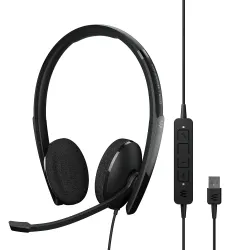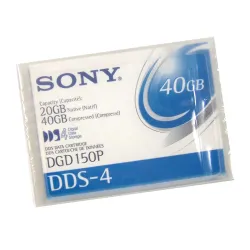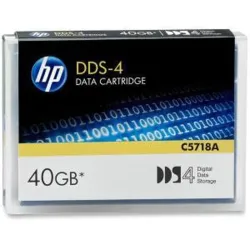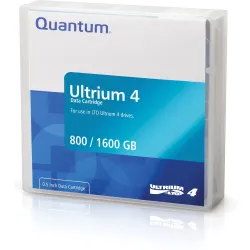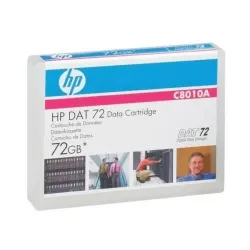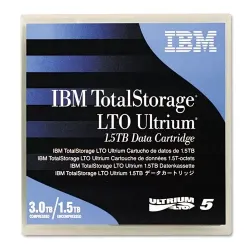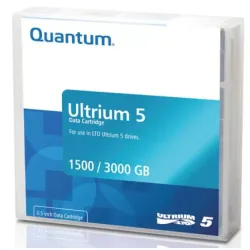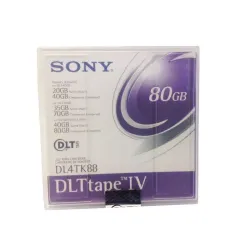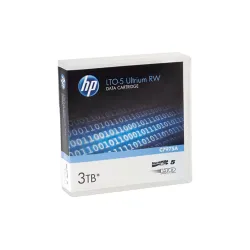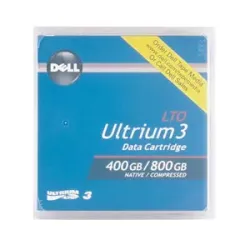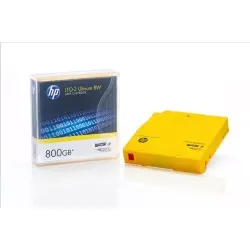The Features and Benefits of Tape Media
Tape media has several features and benefits that make it a popular choice for data storage and backup. Here are some of the key features and benefits of tape media.
Tape media is a reliable, cost-effective, and scalable option for data storage and backup, with a long lifespan and high storage capacity. It also offers portability, compatibility, and low error rates, making it a popular choice for organizations of all sizes.
High storage capacity of tape media
High storage capacity is a key feature of tape media. Tape media has the ability to store large amounts of data in a compact and cost-effective format.
The storage capacity of tape media can range from several gigabytes to multiple terabytes, depending on the type of tape and the tape drive used. For example, the latest generation of LTO (Linear Tape-Open) tape media can store up to 18 terabytes of compressed data on a single tape cartridge. This high storage capacity makes tape media an ideal choice for long-term data archiving and backup, as well as for storing large volumes of data that may not need to be accessed frequently.
Long lifespan of tape media
Long lifespan is another key feature of tape media. Tape media is designed to be a long-term storage solution, with a lifespan that can range from 10 to 30 years, depending on the type of tape and the storage conditions.
Unlike hard disk drives (HDDs) and solid-state drives (SSDs), which have limited lifespans and can be subject to mechanical failure, tape media is less prone to failure due to its simpler design and the fact that it does not have any moving parts. This makes tape media a reliable option for long-term data storage and backup.
Cost-effective tape media
Cost-effectiveness is another key benefit of tape media. Tape media is a relatively low-cost storage solution compared to other options such as hard disk drives (HDDs) and solid-state drives (SSDs).
While the initial cost of acquiring a tape drive and tape media may be higher than other storage options, the cost per gigabyte of storage is significantly lower. This makes tape media an attractive option for organizations that need to store large amounts of data while keeping costs low.
Portability of tape media
Portability is another important feature of tape media. Unlike other storage solutions such as hard disk drives (HDDs) and solid-state drives (SSDs), which are relatively bulky and can be difficult to transport, tape media is lightweight and compact, making it easy to transport and store.
Tape media can be easily transported between different locations, allowing for offsite storage and disaster recovery planning. This is especially important for organizations that need to ensure that their data is protected in the event of a disaster, such as a fire or a flood.
Compatibility of tape media
Compatibility is another important feature of tape media. Tape media is designed to be compatible with a wide range of tape drives and tape libraries from different manufacturers, ensuring that data can be easily transferred and accessed across different systems.
This interoperability between different tape drive and library models is a key benefit of tape media, as it allows for data to be easily migrated between different storage systems and for organizations to mix and match the hardware to meet their specific needs.
How many hours can a tape media record?
The number of hours that a tape media can record depends on various factors, including the type of tape, the recording format, the quality of the tape, and the speed at which it is recorded. For example, a standard LTO (Linear Tape-Open) tape can record up to 2.5 TB (terabytes) of uncompressed data or up to 6.25 TB of compressed data. The actual number of hours of recording time will depend on the format and quality of the data being recorded. For example, a high-quality uncompressed video recording will require more storage space than a lower-quality compressed recording. As an estimate, a single LTO tape can typically record several hundred hours of standard-definition video, or tens of hours of high-definition video, depending on the recording format and quality.
How many times can you reuse tape media?
The number of times that a tape media can be reused depends on various factors, including the type of tape, the quality of the tape, and the storage conditions. In general, tape media can be reused multiple times, but it is important to follow the manufacturer's guidelines for the specific tape media to ensure that it is being used and stored correctly. For example, some tape media, such as LTO (Linear Tape-Open) tapes, are designed to be reused hundreds or even thousands of times if they are handled and stored properly. Other tape media, such as consumer-grade tapes, may have a lower lifespan and may only be suitable for a few reuses. It is also important to note that each time a tape is reused, its quality may degrade slightly, which can affect its reliability and durability. This degradation may be due to wear and tear on the tape itself, as well as changes in the magnetic properties of the tape over time.
What is tape media used for?
Tape media is a type of magnetic storage media that is used for long-term data archiving and backup purposes. Tape media has been used for decades and remains a popular choice for archival storage due to its durability, reliability, and cost-effectiveness. Tape media is typically used to store large volumes of data that are not accessed frequently but need to be retained for compliance, legal, or business continuity purposes. This includes data such as financial records, legal documents, medical records, and scientific research data. Tape media is also commonly used for backup and disaster recovery purposes, where it can be used to create backups of critical data that can be restored in the event of a system failure, data corruption, or natural disaster.
What is the capacity of HP LTO tape?
The capacity of HP LTO tape varies depending on the specific LTO generation and the compression ratio used. Here are the capacities for the different generations of HP LTO tape:
LTO-1: 200 GB (compressed capacity: 400 GB)
LTO-2: 400 GB (compressed capacity: 800 GB)
LTO-3: 800 GB (compressed capacity: 1.6 TB)
LTO-4: 1.6 TB (compressed capacity: 3.2 TB)
LTO-5: 3.0 TB (compressed capacity: 6.0 TB)
LTO-6: 6.25 TB (compressed capacity: 15 TB)
LTO-7: 15 TB (compressed capacity: 30 TB)
LTO-8: 30 TB (compressed capacity: 60 TB)
LTO-9: 45 TB (compressed capacity: 90 TB)
Note that these capacities assume a 2.5:1 compression ratio, which is typical for many data types but may vary depending on the specific data being stored.
What is the capacity of Dell LTO 9 tape?
Dell offers LTO-9 tape cartridges that have a native storage capacity of 18TB and a compressed storage capacity of up to 45TB assuming a 2.5:1 compression ratio. However, it is important to note that the actual storage capacity of an LTO-9 tape cartridge may vary depending on the type of data being stored and the compression ratio achieved.
What are the IBM tape drive models?
IBM offers a range of tape drive models for different storage needs. Here are some of the tape drive models currently available from IBM:
1) IBM TS2280 Tape Drive:
A half-height tape drive that supports LTO-8, LTO-7, and LTO-6 tape cartridges, with a maximum native capacity of 12TB per cartridge and a data transfer rate of up to 300 MB/s.
2) IBM TS1160 Tape Drive:
A high-performance tape drive that supports the latest IBM Enterprise tape format (IBM 3592), with a native capacity of up to 20 TB and a data transfer rate of up to 400 MB/s.
3) IBM TS1150 Tape Drive:
A high-capacity tape drive that also supports IBM 3592 tape cartridges, with a native capacity of up to 10 TB and a data transfer rate of up to 360 MB/s.



